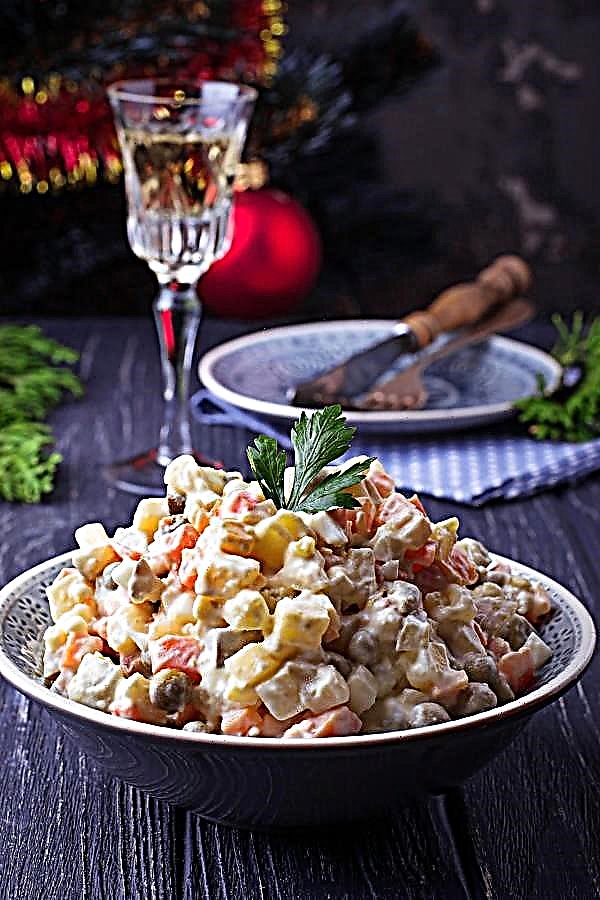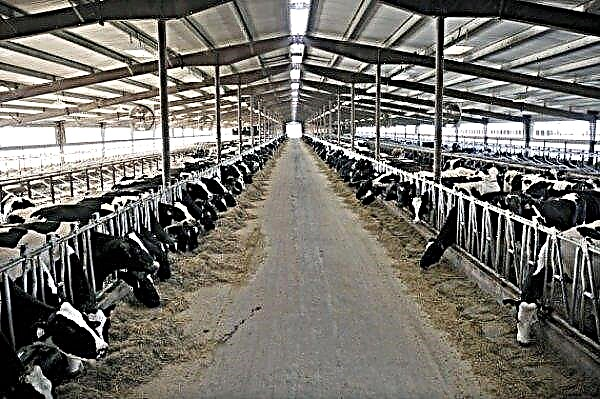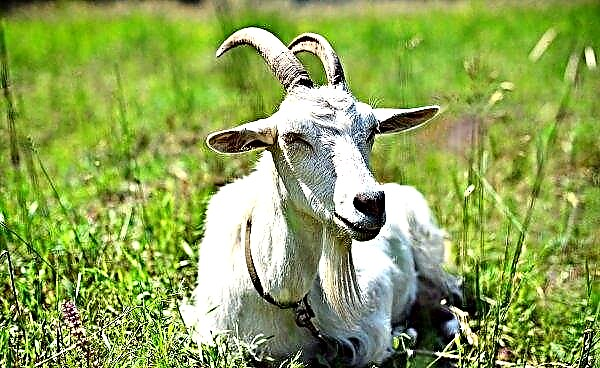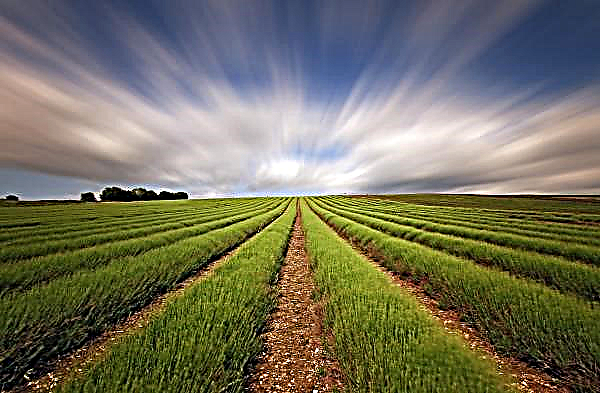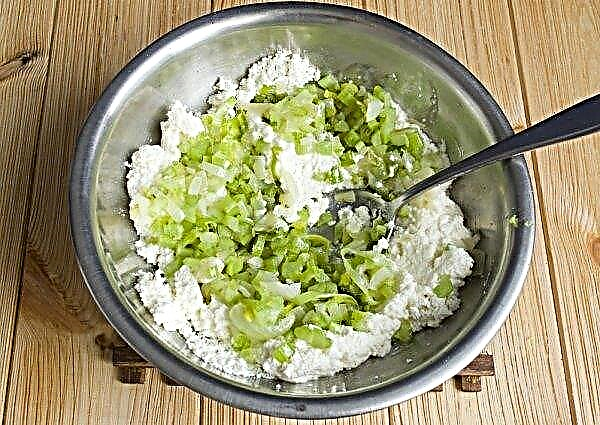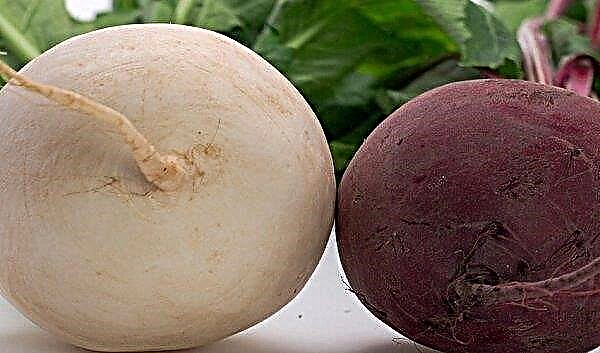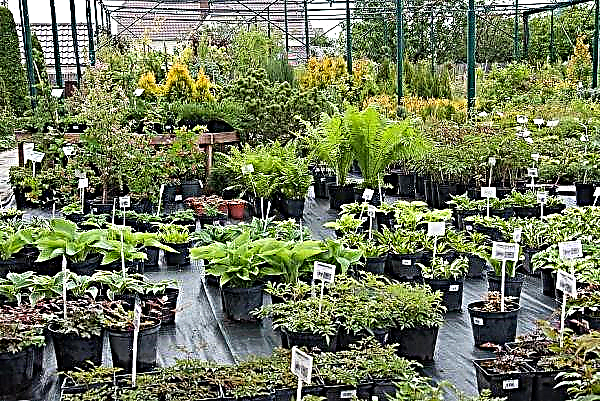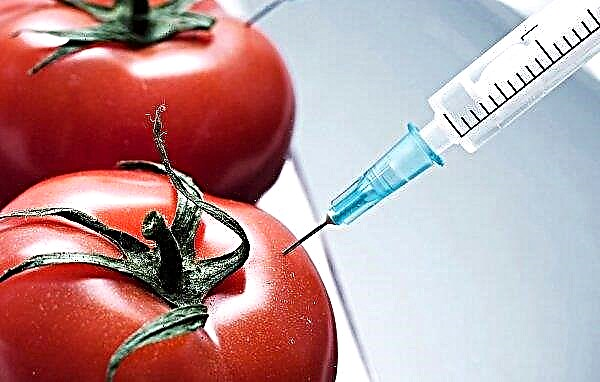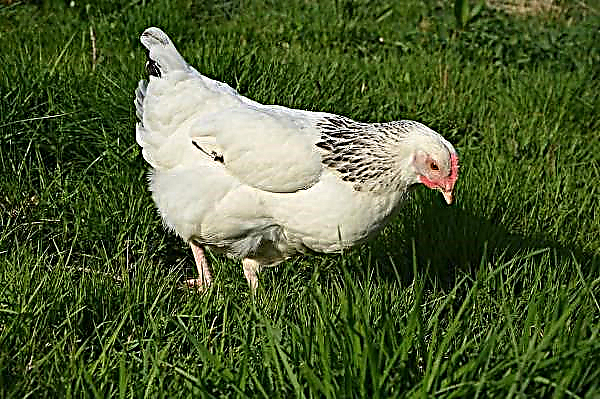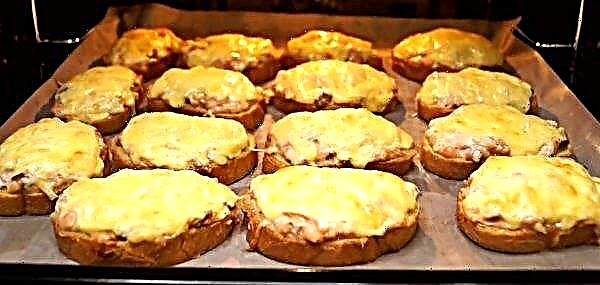Among the existing potato varieties, Dutch breeding varieties are very popular. They have a very high yield and good adaptation to the harsh cold climate. It is precisely because of this that the Dutch woman is so fond of the inhabitants of Russia. We will talk about its features and nuances of growing in our article.
Description and characteristic
There is no data on the date of withdrawal of the Dutch. It is only known that in the 90s. last century, the variety was introduced into the territory of the Soviet Union, and was liked by all gardeners.
Morphology of tubers and tops
The Dutchwoman gives medium height erect tops with medium green leaves. Under it, oblong-oval tubers of medium size are formed. Their skin is light yellow, the flesh of the same color. The flesh is solid; it does not crumble during cooking.
Did you know? The French agronomist Antoine-Auguste Parmentier, in order to accustom his compatriots to potatoes, decided to use the psychological method. The field planted with plants was carefully guarded in the daytime, and at night the security was removed, and people, burning with curiosity, went to the forbidden territory and took what was the reason for such secrecy.
Ripening period and productivity
The variety is mid-season. From the moment of planting to complete harvesting, 70–75 days pass. For cooking, young potatoes can be dug up after 50-60 days.
 With an average tuber size of about 150 g, 2-3 kg of crop can be harvested from one Dutch bush
With an average tuber size of about 150 g, 2-3 kg of crop can be harvested from one Dutch bush
Disease resistance
It has good immunity to many viral and fungal diseases of solanaceous.
Pros and cons of the variety
- The positive features of the variety are ascribed to:
- high yield with minimal care;
- immunity to a number of ailments;
- tolerates transportation well;
- excellent presentation;
- long shelf life;
- ability to adapt to sudden changes in weather.
- Negative features of the variety:
- latex can infect late blight;
- if you use last year's tubers for planting, a new crop is smaller;
- without updating the seed material loses taste.
Planting and growing varieties
Dutch cultivation is carried out according to standard agricultural practices.
The timing
If the tubers are not vernalized, then they can be planted when the soil warms up to + 4 ... + 5 ° C. This temperature is sufficient for the appearance of sprouts and roots. After vernalization, tubers are able to germinate at soil temperature + 2 ... + 3 ° С.

Crop rotation rules
To get a high yield every year, it is undesirable to plant potatoes on the same plot for more than three years in a row. Good predecessors will be: cabbage, legumes, cucumbers, pumpkin. In order for tubers to suffer less from ailments, a year before planting the crop, the area under it can be sown with oats - it will clear the soil of fungal infections.
Important! It is forbidden to plant potatoes after solanaceous.
Soil requirements
Culture loves nutritious soil, preferably black earth. It can grow on sandstone and loam, but well fertilized.
Preparing tubers for planting
Before planting, prepared planting material is carefully sorted. The largest root crops with pronounced eyes are selected. It is then treated with fungicides to increase resistance to diseases and growth stimulants. After that, they are laid out on wet sawdust for vernalization (germination). This process takes 5 weeks.

Landing technology
So that the soil better allows air to pass through, the area under the culture is dug up twice, in autumn, before frost, and in spring. In the autumn, after digging, deep furrows are prepared. In the spring, before planting, they are loosened with a pitchfork. Between the grooves you need to leave 70–80 cm.
Tubers are laid out in grooves so that there are 4–6 potatoes per meter. The depth of the bookmark is 50-120 mm. Planting material is placed in the ground sprouts up.Important! The hotter and drier the climate, the stronger the need to deepen root crops.

Care Features
The variety in care is undemanding. Able to survive short-term dry periods.
Fertilizer and watering
The Dutch woman loves moisture, since it is large-fruited. It is advisable to water it abundantly, but not often. The soil should dry well before the next irrigation procedure.
Did you know? In Russia, for a long time, there were rumors that potatoes grew on the grave of the lascivious daughter of Tsar Mamers, and whoever eats this “diabolical fruit” will certainly sin and he will have a place in hell.
Weeding and hilling
Weeding and cultivation is carried out after each irrigation procedure and rainfall. They spud potatoes twice a season: for the first time, when the bush has reached 15–20 cm in height, the second time - two weeks after the first.

Pest and Disease Control
The Dutch woman is famous for her good immunity. But if her care is not proper, the plant can affect scab or late blight on the tops. May also attack colorado beetles.
Insects are collected manually, and fungicides are used for diseases according to the instructions. For preventive purposes, it is necessary to decontaminate the seed, even elite, and observe the rules of agricultural technology.
Harvesting and storage
Harvested in the stage of technical ripeness. The dried tops will testify to it. Before harvesting, first the tops and weeds are removed from the site, then, using a shovel, each bush is dug up and all the tubers are picked from the soil with their hands. They shake and fold to dry. After drying, the crop is sorted, spoiled, injured root crops are selected. The crops are put in storage in boxes or bags and sent to a cool ventilated cellar.

Dutch is an unpretentious frost-resistant potato variety with excellent yield indicators. Growing it is easy.

